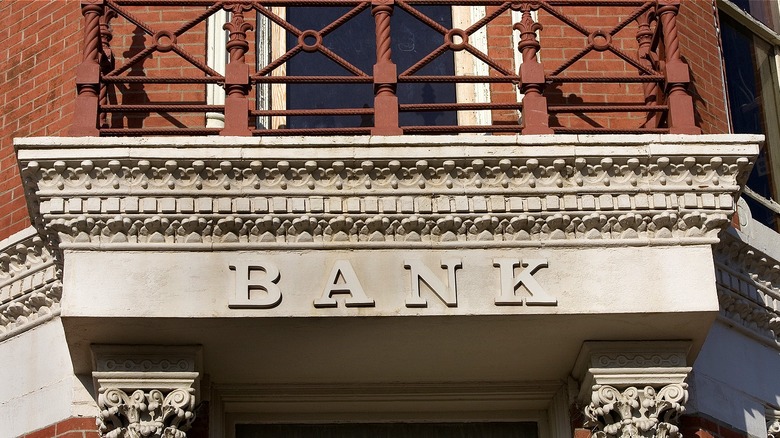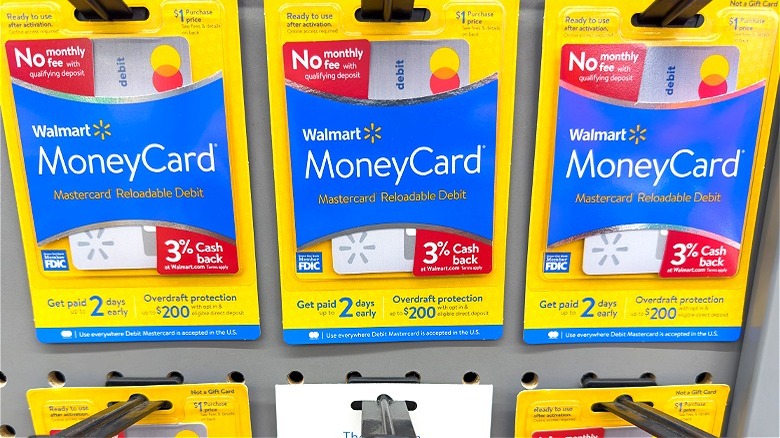What To Do When You're Denied A Checking Or Savings Account
Many consumers are familiar with feelings of angst when applying for a new loan or waiting for a new credit card approval, only to be rejected in the end. Yet, did you know you can also be denied when attempting to open a new checking or savings account? At first glance, it may not make much sense because you're only accessing your own money that's deposited into the account. No credit is extended, right? Well, not exactly.
Incidents like unpaid fees, overdrafts, and bouncing a check can indeed cost a bank or credit union money. Therefore, many banks use a reporting service to investigate your prior banking history, and you could get denied if that sort of harmful activity shows up. For those who may not be familiar with the concept, an overdraft occurs when you make a payment that exceeds the amount of money you have in an account. For example, writing a check for $100 when you only have $80 in your checking account.
Two popular data providers to the banking industry are ChexSystems and Early Warning Services. Think of these two agencies as credit reporting bureaus, like Experian or TransUnion, but tailored to monitoring your banking activity instead. Fortunately, there are a few steps you can take to find yourself in good standing again and continue banking in the meantime.
Check your banking report card for errors
If you're turned down for opening a new checking or savings account, you're entitled to learn the reason why. As a matter of fact, anyone is eligible to view their ChexSystem report once per year or anytime following a rejection. To do so, you'll need to visit ChexSystem's website and input your personal information to initiate the request. Likewise, Early Warning Services also provides a free copy of your report periodically upon request.
Besides unpaid service fees and an excessive number of overdrafts, other common reasons for account denial include suspected fraud, identity theft, and attempting to open too many accounts in a certain amount of time. That said, mistakes do happen and the negative information contained within your report might not be fully accurate. If you don't recognize an indiscretion or suspect an error, you'll want to gather proof and contact the appropriate reporting service to contest the negative findings.
On the other hand, if the negative information in the report is deserved, then you can take steps to correct it. For example, if you have unpaid bank service fees, go ahead and pay them. Once paid, you can request for the bank or other financial institution to start the process of removing the negative entry from your report. Alternatively, you may find it quicker or simpler to contact ChexSystems or Early Warning Services yourself to have your report amended to reflect the payment of overdue fees. Whether legitimate or not, negative marks can stay on your banking report for up to five years.
Some bank accounts don't require checking your history
At the end of the day and in spite of your best efforts, you might still find yourself denied or unable to open a conventional checking or savings account. If that's the case, consider opening what's called a second-chance bank account.
While a second-chance bank account may have less features than a regular checking account, and you can expect to pay higher fees and/or maintain a higher minimum balance than with a standard checking account, institutions that offer these accounts won't examine your ChexSystems or similar report prior to opening the account, which is good news if anyone with a less-than-optimal banking history. Once opened, your responsible use of the second-chance account will be recorded and can be used to rebuild your banking track record in time. Eventually, you'll be in good standing to open a normal checking or savings account once again.
In the meantime, another option to facilitate everyday transactions is buying a prepaid debit card. Prepaid debit cards are widely available at local stores as well as online, with some retailers even offering cash back for using the card for qualifying purchases. Besides making cashless payments everywhere with the prepaid debit card, it can also be used to withdraw money from an ATM, just like a regular debit card. Also, just like a regular debit card, you'll want to locate an ATM that doesn't charge a withdrawal fee. Additional funds can be added to the prepaid account at select physical locations, as well as direct deposit of paychecks or benefits like Social Security.


